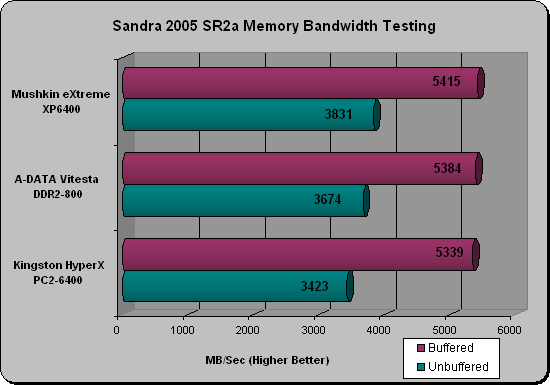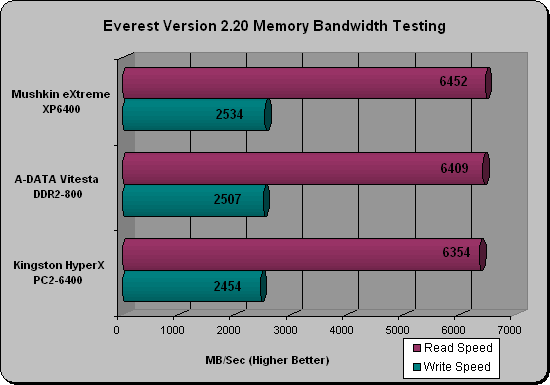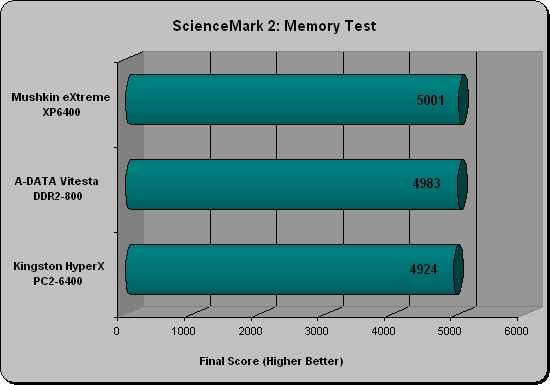DDR2 800MHz Roundup: A-Data, Kingston, & Mushkin
Memory Performance Testing
Sisoft; Sandra 2005 SR2a:
Sisoft Sandra 2005 is designed to test the theoretical power of a complete system and individual components. The numbers taken though are, again, purely theoretical and may not represent real world performance. Higher numbers represent better performance in memory bandwidth.

Results: The Mushkin eXtreme XP6400 memory takes the lead in the first benchmark and hold the lead in all the rest of our testing. This is due to the fact that Mushkin’s eXtreme XP6400 memory runs at 5-3-3-8 timings. Kingston’s and A-DATA’s 800MHz memory modules are rated at the same timings, but a slight difference is seen. Since the timings are identical the differece is likely a result of the different PCB’s and IC’s that each brand uses.
Everest Version 2.20:
Everst 2.20 is a professional system information, diagnostics and benchmarking program for Win32 platforms. It extracts details of all components of the PC. It also tests the actual read and write speeds of your memory giving a fairly accurate look of true memory performance.

Results: Everest 2.20 shows nearly a 100MB/Sec difference in memory bandwidth for read speeds and nearly as much for write between the modules.
ScienceMark 2.0 Final:
Science Mark 2.0 is an attempt to put the truth behind benchmarking. In an attempt to model real world demands and performance, ScienceMark 2.0 is a suite of high-performance benchmarks that realistically stress system performance without architectural bias. All of our testing was completed on the 32 Bit Final benchmark version that is dated March 21st 2005.

Results: Sciencemark showed less than a 2% performance difference between the all the memory modules when we completed memory bandwidth testing. No signifigant difference here and the race is still too close to call.
Now let’s move on to some gaming benchmarks and Super Pi!

Comments are closed.